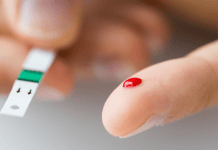NEW AND IMPORTANT RESEARCH: The Critical Importance of Iron During Pregnancy and the Limitations in Measuring Iron Deficiency
The importance of adequate iron during pregnancy cannot be overstated. It’s not about being anemic or not, but more about having optimal iron levels.

Iron requirements during pregnancy increase dramatically as the mother’s blood volume expands and the fetus grows and develops. Iron deficiency during pregnancy is fairly common yet may be difficult to diagnose due to limitations of commonly used diagnostic measures. Yet the ramifications of iron deficiency during pregnancy have lifelong implications for the newborn.
Women with marginal or even adequate iron status pre-pregnancy are prone to iron deficiency when they become pregnant. Their nutritional status influences the brain development of their offspring as the fetus requires iron for:
- Red cells – iron is prioritized to red cells over the brain.
- Storage iron – proper fetal iron loading is important since breast milk is very low in iron. Breast milk may be the only dietary source for the infant in the first 6 months, therefore the infant relies on the iron stores to support hemoglobin synthesis and organ development.
- Non-storage tissue iron (includes the brain and heart) – Tissue iron is at risk once fetal iron stores have been exhausted. Iron deficiency symptoms such as fatigue and altered brain function, stem from iron deficiency at the tissue level. The hippocampus – which plays a role in learning and memory – is rapidly developing in the last trimester. Iron is of critical importance and deficiency impacts cannot be reversed by providing adequate iron at a later time.
The rapidly developing fetal brain is at particular risk of iron deficiency. Iron deficiency that is not corrected at time of development results in long-term neurocognitive abnormalities such as autism and schizophrenia. These children also are at greater risk of becoming iron deficient resulting in long-term effects such as anxiety and depression in adulthood. Postnatal iron deficiency is very common in infants and toddlers, yet their iron status is not routinely measured.
Diagnosis of Iron Deficiency in Pregnant Women
Hemoglobin concentration is used to screen for iron status; however, there are significant limitations to this measure. Because iron incorporation into hemoglobin is a highly prioritized process, anemia is the end-stage result of iron deficiency. Thus, hemoglobin concentration lacks the sensitivity to detect early stages of inadequate iron levels, when there are already physiologic effects at the tissue level, such as the brain. Reliance on hemoglobin alone lacks sufficient sensitivity and specificity to diagnose iron deficiency.
Iron Deficiency and Iron Deficiency Anemia
Iron deficiency and iron deficiency anemia are not synonymous:
- Iron deficiency – state of negative iron balance where iron supply does not meet iron demand.
- Iron deficiency anemia – defines the condition when hemoglobin synthesis has been limited by the lack of iron and the person is anemic as a consequence.
Because iron is prioritized to red blood cells for hemoglobin synthesis, iron deficiency proceeds through multiple non-anemic stages before anemia ensues. Iron deficiency anemia can be thought of as the end stage of the iron deficiency process and is not a sensitive marker of tissue level iron deficiency including brain iron deficiency.
Iron stores are mobilized during the first stage of iron deficiency. This process reflects the body’s attempt to maintain iron delivery to the red cells and tissues including the brain. However, when placed in direct competition for iron, the red cells will be prioritized over the brain.
Link Between Fetal/Postnatal Iron Status and Long-Term Neurocognitive and Mental Health
Maternal-fetal iron status has been linked to a number of neurocognitive and mental health disorders in the offspring, driven in part by the timing of iron deficiency during pregnancy:
- Low maternal iron intake at the time of conception and first trimester is associated with a greater risk of autism in the offspring.
- Low maternal iron intake during the second trimester is associated with a 30% increased risk of schizophrenia. Risk for several adult mental health conditions are driven in part by fetal conditions.
Infants born with low serum ferritin concentrations, reflecting reduced fetal iron loading, have:
- Poorer recognition memory at 3½ to four years of age.
- Poorer school performance at 5-6 years of age.
- Difficulty with planning and attention at 10 years of age.
Infants with onset of iron deficiency in early postnatal life, likely driven by inadequate fetal iron loading, have:
- Slower speed of neural processing that persists beyond the period of iron deficiency and despite treatment.
- Greater risk of cognitive and socioemotional problems including anxiety and depression in their second decade of life and into young adulthood.
Ensuring fetal nutritional and in particular iron health can be seen as an investment in the mental health of the next generation and an investment in society. We need to expand the role of nutrition in ensuring childhood brain health from solely focusing on postnatal nutrition to focusing on prenatal and even pre-conceptional nutrition. Require policies that promote maternal nutritional health heading into pregnancy, followed by close attention to iron during pregnancy.
As one of the best dietary sources of bioavailable heme iron, including beef regularly in the diets of women anticipating pregnancy and during makes nutritional sense. For the newborn, introducing beef at around 6 months of age can help restore their iron stores.
As mentioned, the importance of adequate iron during pregnancy cannot be overstated given its influence on brain development and function across the lifespan.






